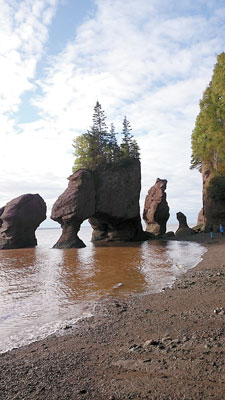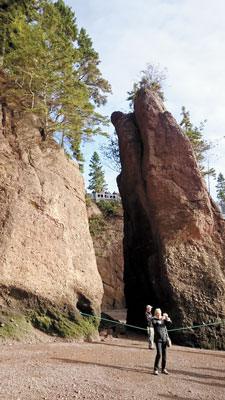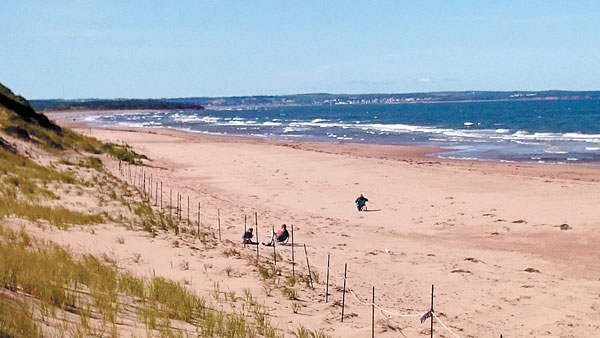November 29, 2016
The Canadian Maritimes Part 2
 By Mary Schricker Gemberling
By Mary Schricker Gemberling
Part 2 of an article which began in the November issue of 50+ Lifestyles.
On day 4 of our tour, we traveled  northwest to the geographic center of the Maritime Provinces. Moncton, New Brunswick was officially founded in 1766 with the arrival of Pennsylvania Dutch immigrants from Philadelphia. The area was known both for its robust shipbuilding industry and as the headquarters for the Intercolonial Railway of Canada. Despite the failures of both industries over the years, Moncton was able to rebound and today the strength of Moncton’s economy has received national recognition.
northwest to the geographic center of the Maritime Provinces. Moncton, New Brunswick was officially founded in 1766 with the arrival of Pennsylvania Dutch immigrants from Philadelphia. The area was known both for its robust shipbuilding industry and as the headquarters for the Intercolonial Railway of Canada. Despite the failures of both industries over the years, Moncton was able to rebound and today the strength of Moncton’s economy has received national recognition.
 Just south of Moncton on the Bay of Fundy is one of the most unbelievable natural phenomena, the Hopewell Rocks. These rock formations are caused by tidal erosion and stand between 40-70 feet tall. Due to the extreme tidal range of the Bay of Fundy the base of the formations are covered in water twice a day. We were able to view the formations at low tide from the ground level and then watch as the water rose, reaching a height of 48 feet that day. This unbelievable site left us speechless.
Just south of Moncton on the Bay of Fundy is one of the most unbelievable natural phenomena, the Hopewell Rocks. These rock formations are caused by tidal erosion and stand between 40-70 feet tall. Due to the extreme tidal range of the Bay of Fundy the base of the formations are covered in water twice a day. We were able to view the formations at low tide from the ground level and then watch as the water rose, reaching a height of 48 feet that day. This unbelievable site left us speechless.
The next stop on our tour was Prince Edward Island. Slightly larger than our state of Delaware, PEI is the smallest of the three Maritime Provinces in both land area and population. The island’s reputation as a province of outstanding natural beauty is evidenced in its rolling hills, woods, reddish white sand beaches, and famous red soil. The island’s lush landscape has a strong bearing on its economy and culture. The author Lucy Maud Montgomery drew inspiration from the land for the setting of her classic novel Anne of Green Gables. I re-read the book shortly before our trip, and enjoyed walking through the reconstructed home and imagining Anne in her room overlooking the land surrounding Green Gables.
After spending two nights in  Charlottetown, the capital and largest city of Prince Edward Island, we headed back to Nova Scotia and north towards Cape Breton. Although physically separated from the peninsula by the Strait of Canso, the island is part of the province of Nova Scotia.
Charlottetown, the capital and largest city of Prince Edward Island, we headed back to Nova Scotia and north towards Cape Breton. Although physically separated from the peninsula by the Strait of Canso, the island is part of the province of Nova Scotia.
Our home away from home for the next three nights was the Keltic Lodge in Ingonish Beach. This historic resort is located in the heart of the Cape Breton Highlands National Park surrounded by the Atlantic Ocean with a spectacular view of Cape Smokey rising out of the sea.
Cape Breton’s first residents were most likely maritime natives, ancestors of the Mi’kmaq. By 1850, Gaelic was the third most-common mother tongue in British North America after English and French and is believed to have been spoken by more than 200,000 British North Americans, many of whom migrated to Nova Scotia and Newfoundland. The Celtic language, music and culture are still felt throughout the region today.
A highlight of our tour was traveling the Cabot Trail, named after explorer John Cabot. One of the world’s most scenic and exciting drives; this 185 mile road is carved into the side of mountains and offers unforgettable ocean vistas, ascending to the plateaus of Cape Breton Highlands National Park.
With our trip coming to an end, we traveled down the coast of Nova Scotia to Liscombe Mills. Our lodge, just two and a half hours from Halifax, was tucked away on the tranquil shores of the Liscomb River. With spectacular river views at the Riverside Dining Room, we enjoyed our last Maritime meal. For almost two weeks we had feasted on local delicacies such as lobster, mussels, bacon wrapped scallops and salmon, with each meal better than the last.
From the bustling cities, serene harbors and beautiful wild spaces of Peggy’s Cove, to the fabled Hopewell Rocks and the Bay of Fundy tides, to the lush, untainted landscape of the Cabot Trail we had visited a corner of the world like no other.
-Mary Schricker Gemberling
Mary, a former educator and Seniors Real Estate Specialist, is the author of three books, The West End Kid, Hotel Blackhawk; A Century of Elegance, and Labor of Love; My Personal Journey through the World of Caregiving (available at amazon.com )
Filed Under: History
Trackback URL: https://www.50pluslife.com/2016/11/29/the-canadian-maritimes-part-2/trackback/


